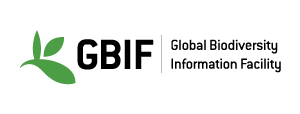Djamde Wildlife Reserve in Togo: diversity of woody species
Direction des Ressources Forestières (DRF)
Description
Tropical forests, which cover less than 10% of the total land area, harbor 50-90% of the known terrestrial plant and animal species and forest biodiversity underpins most of the forest ecosystem services (MEA 2005; Seppala et al. 2009; FAO 2010). They are the richest biological communities on earth and these forests have been recognized to harbor a significant proportion of global biodiversity (Myers et al 2000; Baraloto et al 2013) and also provide an estimated 1.6 billion people with livelihood systems and wood (World Bank 2004; FAO 2010). These forests provide many ecosystem services such as species conservation, prevention of soil erosion, and preservation of habitat for plants and animals (Armenteras et al 2009). According to the mapping done on the 2013 satellite imagery data as part of the National Forest Inventory (NFI), in Togo, forest cover represents 24.24% of the country's total area (MERF, 2016). This forest cover consists mainly of dense forests, riparian forests, open forests, dense woodlands and forest relics. Changes in land use have resulted in the vulnerability of the country's forest ecosystems, whose area is shrinking significantly every year, in favor of savannas and farmland (MERF, 2018).Overexploitation has resulted in the rapid loss of forests and is recognized to be one of the biggest environmental and economic problems around the world (Mani and Parthasarathy, 2006). Tropical forests are disappearing at alarming rates worldwide, reducing annually by 1-4% of their current area (Laurance, 1999). Relatively increased anthropogenic pressures have led to agricultural expansion and overgrazing of livestock (Anitha et al 2010). In fact, between 1975 and 2010, Togo's forests have lost nearly 33% of their land area (USGS EROS, 2013) and Togo is among the countries with the highest net loss as a percentage of forests (FAO, 2011). These growing deforestation and degradation phenomena limit the ability of forest ecosystems to provide their vital goods and services to the population. In order to conserve biological diversity, since the colonial period, Togo has constituted a vast network of protected areas, including national parks, classified forests and wildlife reserves. This network of 83 protected areas is estimated at about 14% of the national land.Thus, protection and restoration of habitats, which enhance biodiversity and productivity, could directly benefit communities dependent on these forest resources (Heywood 1995; Reddy & Ugle 2008). But in 1990, following the socio-political unrest, these protected areas suffered a major degradation resulting in flooding, overgrazing, illegal and excessive resources exploitation of these protected areas. To reverse the trend, the Government has adopted in 2003 a standard protected area management framework aimed at restoring and securing about 10.21% of the national territory (MERF, 2008). Identified as a priority protected area and to strengthen its management, the wildlife reserve of Djamdè was granted to the company TOGO-FAUNE in 2003, for 99 years.It is within the framework of this concession that the company named TOGO-FAUNE, with technical support of the Ministry of the Environment and Forest Resources (MERF) commissioned studies including the forest inventory of Djamdè reserve, for the elaboration of its management plan.The present dataset is developed to 1) show the importance of Djamdè Wildlife Reserve in term of biodiversity conservation in Togo, 2) promote public-private partnership in protected areas management, and 3) launch a funds call for the development and management plan for this protected area.
Type of content
Includes: point occurrence data, gbif import.
Citation
Radji R, AKPENE K (2018). Djamde Wildlife Reserve in Togo: diversity of woody species. Version 1.5. Direction des Ressources Forestières (DRF). Occurrence dataset https://doi.org/10.15468/ugkanx accessed via GBIF.org on 2020-03-18.
Digitised records
Looking up... the number of records that can be accessed through the GBIF France. This resource was last checked for updated data on 18 Mar 2020. The most recent data was published on 23 Jul 2018.
Click to view records for the Djamde Wildlife Reserve in Togo: diversity of woody species resource.Metadata last updated on 2025-07-20 01:08:33.0





